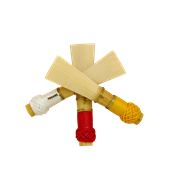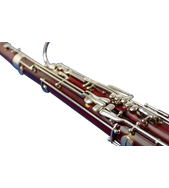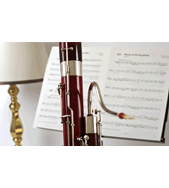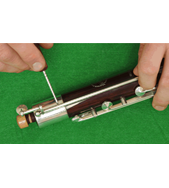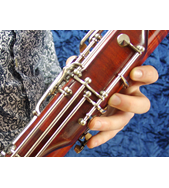10 Fun Facts About Bassoons
March 18th, 2022

10 Fun Facts About Bassoons
10 Fun Facts About Bassoons
The bassoon:
1. is a wonderful and challenging instrument to play: complex to master fully, but highly rewarding to play whether you are a beginner or a seasoned player. Always in demand in orchestras, it also opens up lots more playing opportunities than many other instruments
2. has one of the widest pitch ranges of orchestral instruments, leaving aside the harp and keyboard instruments, at well over 3 octaves
3. was first invented in the second half of the 17th century, and developed from the dulcian (also known as the curtal in England). The dulcian was a one-piece instrument so rather unwieldy to transport
4. originally had four keys, which has now grown to 25 or more, bringing greater range and ease of playing
5. most commonly in use today is the “Heckel system” bassoon, developed during the 19th century and pioneered by Heckel towards the end of that century. The French system bassoon is still to be found, and has a more direct line of descent from the bassoons of the baroque and classical periods
6. has a conical bore. The bore is a long, very gradually widening cone from where the reed fits onto the crook all the way through to the far end of the bassoon. The bore starts at around four millimetres wide at the tip of the crook, growing to around four centimetres at the end of the bell joint. This gently expanding bore is a major contributor to the tone and character of the bassoon
7. is made from maple wood (acer pseudoplatanus), also known as sycamore in the UK and sycamore maple in the USA. For bassoon making, the wood is generally sourced from the mountainous areas of the Balkans in South East Europe. The maple from these areas is slow-growing owing to the cold climate, producing a dense and durable wood ideal for bassoon making
8. uses a double reed; that is, the bassoonist blows through a slight gap between two reeds. The distance the reeds are apart, their width, their thickness and a whole host of other characteristics, contribute hugely to the tone, pitch and consistency of the sound
9. breaks down into four sections (called joints) for carrying around, with tenons covered in either cork or string to ensure a good seal is achieved when together but that they can be taken apart easily
10. has a wide range of sonorities, from soft and lyrical to hard and vibrant - depending on how it is played and the register in which it is being played (high or low pitch ranges). This makes it a highly versatile member of the orchestra, and is something which has been exploited to the full by composers since the bassoon’s first introduction to the orchestra. It is also a key component of the enjoyment and challenge of playing the bassoon.
If you are looking to take up the bassoon, or upgrade your instrument, take a look at the bassoons we have available here, and contact us for advice.

